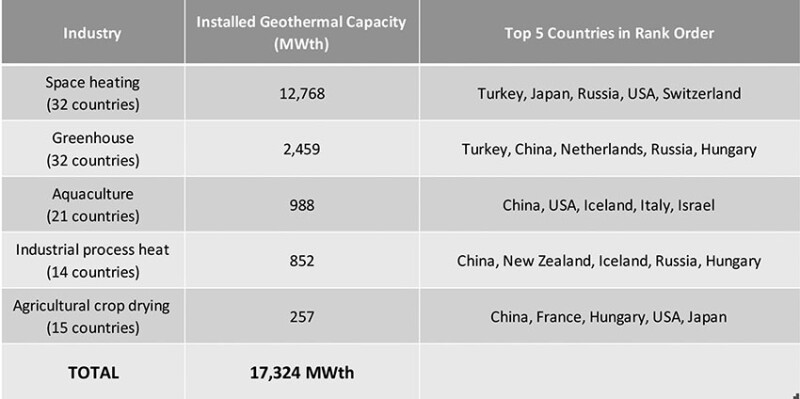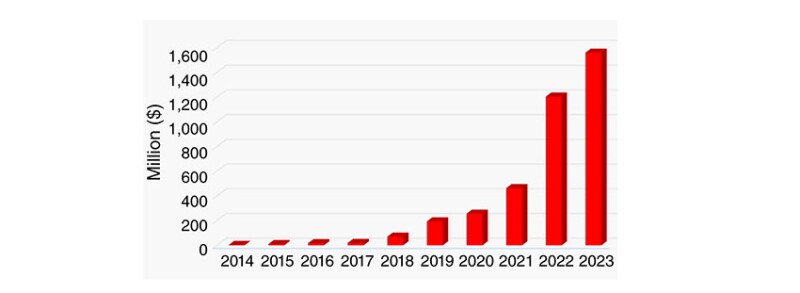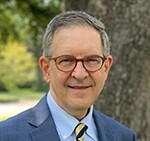This is the first of a series of six articles on SPE’s Grand Challenges in Energy, formulated as the output of a 2023 workshop held by the SPE Research and Development Technical Section in Austin, Texas.
Described in a JPT article last year, each of the challenges are discussed separately in this series: geothermal energy; net-zero operations; improving recovery from tight/shale resources; digital transformation; carbon capture, utilization, and storage; and education and advocacy.
SPE identified five technical “Grand Challenges” in 2023 which, if successfully developed, could advance the interests of the SPE community in a net-zero world and help ensure our longevity and contributions to a prosperous future (Halsey et al. 2023).
Access to the subsurface is a key skillset of the SPE community, including geology and geophysics, well construction and completion, reservoir engineering, production operations, and facilities. The challenges that geothermal faces to become a leading player in the net-zero world are well within the areas of expertise of the SPE community, ranging from rapid technology implementation and learning-by-doing to assure competitiveness, to establishing suitable funding mechanisms to secure access to capital.
The increasing presence of geothermal-related sessions in SPE workshops and conferences shows the interest to explore novel methods to harness geothermal energy for power supply, thermal-use applications, and energy storage, illustrated by the threefold increase in OnePetro references since 2020 (Fig. 1).

The Role of the Oil and Gas Industry
Geothermal energy offers a path forward using business models that are well-suited to the oil and gas industry, which can apply its current technology and expertise to produce clean, reliable power and thermal energy at scale. Geothermal is also the only baseload renewable energy source that produces heat, presenting an avenue to mitigate the largest contribution humanity makes to carbon emissions: heating and cooling which account for 40% of all carbon emissions globally (Lund and Toth 2021).
Table 1 presents some of the current applications.

In 2023, the Energy Institute of The University of Texas at Austin released a comprehensive report, “The Future of Geothermal in Texas,” led by Project InnerSpace (Beard and Jones 2023). The report presented a challenge to leverage the technical capabilities and resources in the state.
It estimated that “should the industry drill 15,000 geothermal wells each year for four years, it would provide the energy equivalent of all oil and gas used for electricity and heat production in the State today, including industrial heat.” This initiative is part of a broader movement in Texas, the spiritual home of the US fossil fuel industry, where a new geothermal energy ecosystem is emerging with veterans of the oil and gas business playing pivotal roles.
Geothermal energy cannot only help to reduce the state’s emissions but also through its baseload and energy storage capabilities, it can support a power grid that has struggled to cope with severe weather events as demand has grown. Texas serves as a prime example of a location deeply tied to fossil fuels, where numerous oil and gas developers are announcing plans for geothermal expansion. This trend is not confined to Texas alone; similar developments are underway in other US states, Europe, the Middle East, and the Far East.
Moreover, there are synergies between the production of hydrocarbons and the production of hot water for energy. The basic drilling technologies that grant access to these resources are fundamentally similar, although geothermal drilling costs are high, and the technology and tools face challenges posed by hard rocks and extreme temperatures. Current commercial geothermal wells necessitate circulating large volumes of fluid due to the lower energy density relative to hydrocarbons.
For traditional hydrothermal projects, the key requirement is the presence of an in-situ aquifer and artesian production whereby fluid pressure moves the fluid from the subsurface to the surface. However, these systems occur in limited geographic regions.
Next-generation concepts are appearing to overcome the need to find a subsurface aquifer and facilitate scalability. In enhanced geothermal systems (EGS), permeability is artificially created in hot, dry rock with the use of hydraulic fracturing, drawing upon shale and tight-reservoir oil and gas technologies. This cross-disciplinary approach highlights the potential for innovative solutions in both conventional and renewable energy sectors.
In advanced geothermal systems (AGS), closed-loop circulation of fluid is achieved in the subsurface without flow exchange between the wellbore and reservoir. Fluid is pumped down from the surface, picks up heat from the surrounding formation via conduction and, in some technologies, localized convection, and returns to surface in the same wellbore.
Recent Breakthroughs
Since the publication of the SPE Grand Challenges last year, significant milestones across multiple facets of the geothermal industry have been achieved to show that “cross-pollination” between oil and gas and geothermal technologies are advancing the learning curve to provide a competitive solution.
US Department of Energy (DOE)/University of Utah FORGE Project. DOE funded a technology development and demonstration effort focused on a field test site in Milford, Utah. FORGE, the Frontier Observatory for Research in Geothermal Energy, is offset a few miles from the conventional Blundell Power Plant that accesses the Roosevelt Hydrothermal System. DOE budgeted $220 million for this multiyear EGS system test and for the development of associated technology, with a possible $135 million extension beyond 2025 (McKitrick 2022).
In June 2023, the Utah FORGE geothermal research project achieved a breakthrough with confirmed connectivity between an injection/production well “doublet” system that is inclined at 65°. Initial tests involving the injection and recovery of 1,800 bbl of water showed promising results, with further assessments needed for commercial viability (O’Donoghue 2023). Data analysis confirmed flow connectivity, and seismic monitoring indicated minimal seismic activity.
Fervo Energy. Fervo demonstrated a fine example of applying oil and gas technology to EGS with a successful horizontal pair EGS doublet flow test at the Blue Mountain, Nevada, test site (Cariaga 2023). Later in 2023, Fervo announced the Cape Station project in Utah, offset from FORGE, to deliver up to 400 MW capacity in 29 wells (Jacobs 2023). In February 2024, they reported drilling success, surpassing DOE expectations for EGS. “Drilling time accounts for over 75% of total well cost, and through eight horizontal wells, a 60% reduction in drilling time has been realized” (El Sadi et al. 2024). Fervo attributed its success to improved dysfunction mitigation, increased rates of penetration, and extended drill-bit life using polycrystalline diamond compact (PDC) drill bits typically used in shale basins.
Sage Geosystems. In September 2023, Sage published results from a pilot that demonstrated the ability to provide 18 hours or more of electricity storage capacity for continuous baseload energy when coupled with solar or wind generation. The pilot generated 200 kW for over 18 hours and 1 MW for 30 minutes. Sage’s energy storage technology proved cost-competitive with lithium-ion batteries, pumped storage hydropower, and natural gas peaking plants, making it a promising clean energy solution for enhancing grid reliability. Their novel energy storage system uses deep induced fractures to provide pressure and storage volume in a cyclic process based on “ballooning” fractures (Jacobs 2023). In February 2024, Chesapeake announced a $17 million investment to evaluate the Sage energy storage process in Texas (Jacobs 2024).
Eavor. In March 2023, Eavor completed construction of its AGS demonstration project in New Mexico, with a directional well system reaching a depth of 18,000 ft. This leveraged advanced directional drilling technology adapted from oil and gas to construct horizontal well sections with the final objective being a closed-loop system resembling a radiator. This demonstration occurred in parallel with additional projects underway in Europe and Asia. A performance increase in drilling was observed with the implementation of proprietary technology and use of insulated drillpipe (Cariaga 2023).
Project InnerSpace. In December of 2023, Project InnerSpace announced the beta launch of GeoMap, a freely accessible geothermal exploration tool developed in partnership with Google (geomap.projectinnerspace.org). The tool aims to showcase untapped geothermal potential in regions with limited energy data access, addressing the need for cleaner energy sources. Development plans include the release of additional continents and high-resolution case studies, with the goal of covering all continents and the world’s top 100 population centers by 2025.
Technical Challenges
A key uncertainty regarding geothermal resources concerns forecasting both the flow rate and the temperature of the produced water. The temperature and/or reservoir pressure in a geothermal project may decline over time as replenishing heat needs to travel greater distances to the wellbores. EGS requires the fracturing of hot, dry rock to create flow conduits between cold water injectors and hot water producers, with some seismicity risk. By contrast, AGS does not require hydraulic fracturing, and therefore it has fewer social license risks. However, the lower surface area in contact with the rock requires a higher temperature drop for heat flow, leading to an overall increase in the levelized cost of electricity (LCOE) for a given initial reservoir temperature.
Low flow rate risk may be mitigated with increased deployment scale. Most EGS pilot system demonstrations have been designed as doublets with one injector and one producer. There is risk that injected fluid is not produced but flows elsewhere. Both FORGE and Fervo’s Nevada test systems have offset distances of about 300–400 ft between injector and producer. Close spacings assure more fluid communication, but if larger spacings are proven feasible, multiple injection wells could flow fluid to multiple producers, reducing fluid loss and short-circuit risks and increasing the volume of hot rock contributing to the system.
Deeper and larger geothermal wells are costly and a challenge to investment hurdle criteria. Oil and gas experience with novel financing mechanisms, connection to external capital pools, and cost-reducing technology development could all reduce barriers to funding geothermal development. Disclosed investments into geothermal startups are nearly $1,500 million for the 2014–2023 period, with more than 80% of the total occurring in the past 3 years (Fig. 2).

Locating geothermal projects adjacent to mothballed power generators may also offer some economic protection, with the substantial benefit that a local grid connection may already exist. Co-location of geothermal projects near other energy transition projects, such as carbon capture, utilization, and storage (CCUS) or green hydrogen generation, bring additional synergies in supplementing or fully supplying those processes with baseload renewable energy.
Ownership rights to geothermal heat are inconsistent or ill-defined across much of the world. Clarification of ownership must precede investment. Texas enacted new laws in 2023 that bestowed ownership of geothermal energy to the landowner or the owner of the surface estate of the land (Boschee 2023). This model might have wider applicability in North America and other jurisdictions.
The Way Forward
As mentioned above, the 2023 UT-Austin report ended on a provocative note: Divert some fraction of the thousands of wells drilled in Texas each year to geothermal energy development, and in this decade, there could be a significant shift to lower CO2 emissions from the power sector, with potentially attractive economics.
The opportunities for geothermal energy to provide direct thermal use energy and electric power are present and growing. Great progress has been made in just a few years, and the pace is accelerating. The oil and gas industry can provide many of the needed skills and resources to help make this happen. Investors, consumers, and governments can impact the market in ways that better reward oil and gas firm investments in geothermal via risk-sharing financial models, tax incentives, feed-in tariffs, and more. The collaboration of the oil and gas industry, with their infrastructure, technology, and workforce, will support the uptake of geothermal energy in the pivot to cleaner energy.
For Further Reading
Grand Challenges for the Oil and Gas Industry for the Next Decade and Beyond by Thomas Halsey, et al., JPT 2023.
Term Search for “Geothermal Energy.” OnePetro, accessed 1 February 2024.
Direct Utilization of Geothermal Energy 2020 Worldwide Review by John W. Lund and Aniko N. Toth, Proceedings World Geothermal Congress 2021.
The Future of Geothermal in Texas: The Coming Century of Growth & Prosperity in the Lone Star State by Jamie C. Beard and Bryant A. Jones (editors), et al., The University of Texas at Austin Energy Institute 2023.
Utah FORGE: New Renewable Energy Project in the Middle of Nowhere in Utah to Benefit the Entire World by Cathy McKitrick, Utah Stories 2022.
Utah’s FORGE Geothermal Site Proves It’s More Than Just Wishing Wells by Amy Joi O’Donoghue, Deseret News 2023.
Fervo Energy Reports Breakthrough in Field-Scale EGS Project in Nevada by Carlo Cariaga, ThinkGeoEnergy.com 2023.
Fervo Energy Launches First Phase of 400-MW Geothermal Project in Utah by Trent Jacobs, JPT 2023.
SGP-TR-227 Review of Drilling Performance in a Horizontal EGS Development by K. El Sadi, B. Gierke, E. Howard, and C, Gradl, Proceedings 49th Workshop on Reservoir Engineering, Stanford University, 2024.
Is Hydraulic Fracturing the Next Big Breakthrough in Battery Tech? by Trent Jacobs, JPT 2023.
Chesapeake Leads $17 Million Investment To Build Geopressured Battery by Trent Jacobs, JPT 2024.
Eavor Completes Eavor-Deep Geothermal Demonstration Project by Carlo Cariaga, ThinkGeoEnergy.com 2023.
The Geothermal Exploration Opportunities Map Beta (GeoMap), Project InnerSpace 2024.
The Big Deal: XGS Continues Wave of Investment for Geothermal Startups by Robert Lavine, Global Corporate Venturing 2024.
Who Holds the Rights to Geothermal Heat Sources? by Pam Boschee, JPT 2023.

Jeffrey R. Bailey retired in 2022 after 36 years working for major oil and gas companies in the areas of drilling, subsurface technology, and related computational modeling of dynamic processes. He holds undergraduate degrees in physics and economics from Stanford University and graduate degrees in mechanical engineering and technology policy from the Massachusetts Institute of Technology. He is the author or coauthor of more than 60 technical articles and patents.

Taylor Mattie, director of technology transfer and deployment, Project InnerSpace, has 8 years of experience in the energy industry. He previously worked as director of geothermal strategy and growth at Baker Hughes. Mattie is obsessed with geothermal energy and figuring out ways to scale its potential to global availability, which has led to articles in various publications. He holds a BS in petroleum and natural gas engineering from Penn State University and a master of energy from the University of Auckland.

Tim Lines, consultant, Project InnerSpace, and CEO of Texas developer Geothermal Wells LLC. He has 40 years’ experience in upstream oil and gas, geothermal energy, power generation, and district heating. He co-founded Oilfield International, an energy consultancy; served on the boards of UK, Thailand, and Cyprus energy companies, controlling 1.2 billion bbl of oil reserves; and led a legislative team drafting regulatory and tariff frameworks for district heating and central heating plants for central and eastern Europe countries. Lines authored Chapter 7 of “The Future of Geothermal in Texas,” The University of Texas at Austin, January 2023, and on behalf of SPE collaborated on the winning Project InnerSpace/SPE/Geothermal Rising tender submission for the $165 million US Department of Energy GEODE grant, “Geothermal Energy from Oil and Gas Demonstrated Engineering.”

Daniel Merino-Garcia, Project InnerSpace, moved from the oil and gas industry into the geothermal energy sector in 2023 after 20 years working for European oil and gas companies in research and technology development in the areas of production engineering, flow assurance, and fluid characterization. He has authored or coauthored more than 40 technical articles. Merino-Garcia holds a graduate degree in chemical engineering from Valladolid University (Spain) and a doctorate in petroleum engineering from the Technical University of Denmark.

